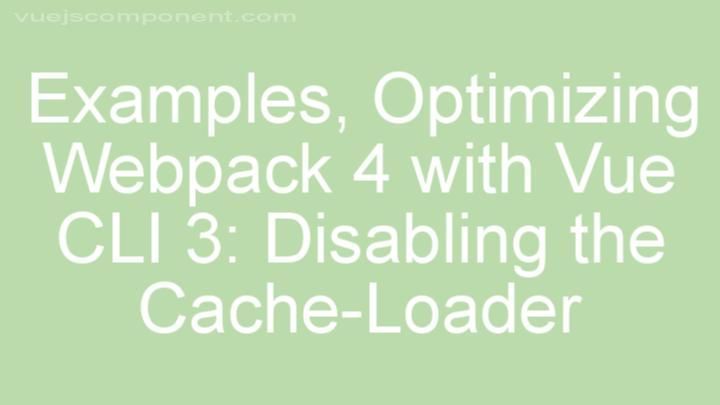
Install
option-cache 



Simple API for managing options in JavaScript applications.
Install
Install with npm:
$ npm install --save option-cache
Example app
Use options-cache in your javascript application:
var util = require('util');
var Options = require('options-cache');
function App(options) {
Options.call(this, options);
this.init();
}
util.inherits(App, Options);
App.prototype.init = function() {
this.option('cwd', process.cwd());
this.option('foo', 'bar');
};
App.prototype.a = function(value) {
this.enable(value);
};
App.prototype.b = function(value) {
if (this.enabled(value)) {
// do something
} else {
// do something else
}
};
API
Options
Create a new instance of Options.
Params
options{Object}: Initialize with default options.
Example
var app = new Options();
.option
Set or get a default value. Defaults are cached on the .defaults object.
Params
key{String}: The option name.value{any}: The value to set.returns{any}: Returns avaluewhen onlykeyis defined.
Example
app.default('admin', false);
app.default('admin');
//=> false
app.option('admin');
//=> false
app.option('admin', true);
app.option('admin');
//=> true
.option
Set or get an option.
Params
key{String}: The option name.value{any}: The value to set.returns{any}: Returns avaluewhen onlykeyis defined.
Example
app.option('a', true);
app.option('a');
//=> true
Params
key{String}value{any}type{String}: Javascript native type (optional)returns{Object}
Example
app.option('admin', true);
console.log(app.either('admin', false));
//=> true
console.log(app.either('collaborator', false));
//=> false
Params
key{String}value{any}type{String}: Javascript native type (optional)returns{Object}
Example
app.option('a', 'b');
app.fillin('a', 'z');
app.fillin('x', 'y');
app.option('a');
//=> 'b'
app.option('x');
//=> 'y'
.hasOption
Return true if options.hasOwnProperty(key)
Params
prop{String}returns{Boolean}: True ifpropexists.
Example
app.hasOption('a');
//=> false
app.option('a', 'b');
app.hasOption('a');
//=> true
.enable
Enable key.
Params
key{String}returns{Object}Options: to enable chaining
Example
app.enable('a');
.disable
Disable key.
Params
key{String}: The option to disable.returns{Object}Options: to enable chaining
Example
app.disable('a');
.enabled
Check if prop is enabled (truthy).
Params
prop{String}returns{Boolean}
Example
app.enabled('a');
//=> false
app.enable('a');
app.enabled('a');
//=> true
.disabled
Check if prop is disabled (falsey).
Params
prop{String}returns{Boolean}: Returns true ifpropis disabled.
Example
app.disabled('a');
//=> true
app.enable('a');
app.disabled('a');
//=> false
.isTrue
Returns true if the value of prop is strictly true.
Params
prop{String}returns{Boolean}: Uses strict equality for comparison.
Example
app.option('a', 'b');
app.isTrue('a');
//=> false
app.option('c', true);
app.isTrue('c');
//=> true
app.option({a: {b: {c: true}}});
app.isTrue('a.b.c');
//=> true
.isFalse
Returns true if the value of key is strictly false.
Params
prop{String}returns{Boolean}: Uses strict equality for comparison.
Example
app.option('a', null);
app.isFalse('a');
//=> false
app.option('c', false);
app.isFalse('c');
//=> true
app.option({a: {b: {c: false}}});
app.isFalse('a.b.c');
//=> true
.isBoolean
Return true if the value of key is either true or false.
Params
key{String}returns{Boolean}: True iftrueorfalse.
Example
app.option('a', 'b');
app.isBoolean('a');
//=> false
app.option('c', true);
app.isBoolean('c');
//=> true
Release history
v4.0.0
Breaking changes
.optionmethod no longer takes a list or array of objects.mergeOptionswas removed
About
Related projects
- base: Framework for rapidly creating high quality node.js applications, using plugins like building blocks | homepage
- cache-base: Basic object cache with
get,set,del, andhasmethods for node.js/javascript projects. | homepage - config-cache: General purpose JavaScript object storage methods. | homepage
- map-cache: Basic cache object for storing key-value pairs. | homepage
Contributing
Pull requests and stars are always welcome. For bugs and feature requests, please create an issue.
Contributors
| Commits | Contributor |
|---|---|
| 95 | jonschlinkert |
| 2 | tunnckoCore |
Building docs
(This project's readme.md is generated by verb, please don't edit the readme directly. Any changes to the readme must be made in the .verb.md readme template.)
To generate the readme, run the following command:
$ npm install -g verbose/verb#dev verb-generate-readme && verb
Running tests
Running and reviewing unit tests is a great way to get familiarized with a library and its API. You can install dependencies and run tests with the following command:
$ npm install && npm test
Author
Jon Schlinkert
License
Copyright © 2017, Jon Schlinkert.
Released under the MIT License.
This file was generated by verb-generate-readme, v0.6.0, on May 19, 2017.




